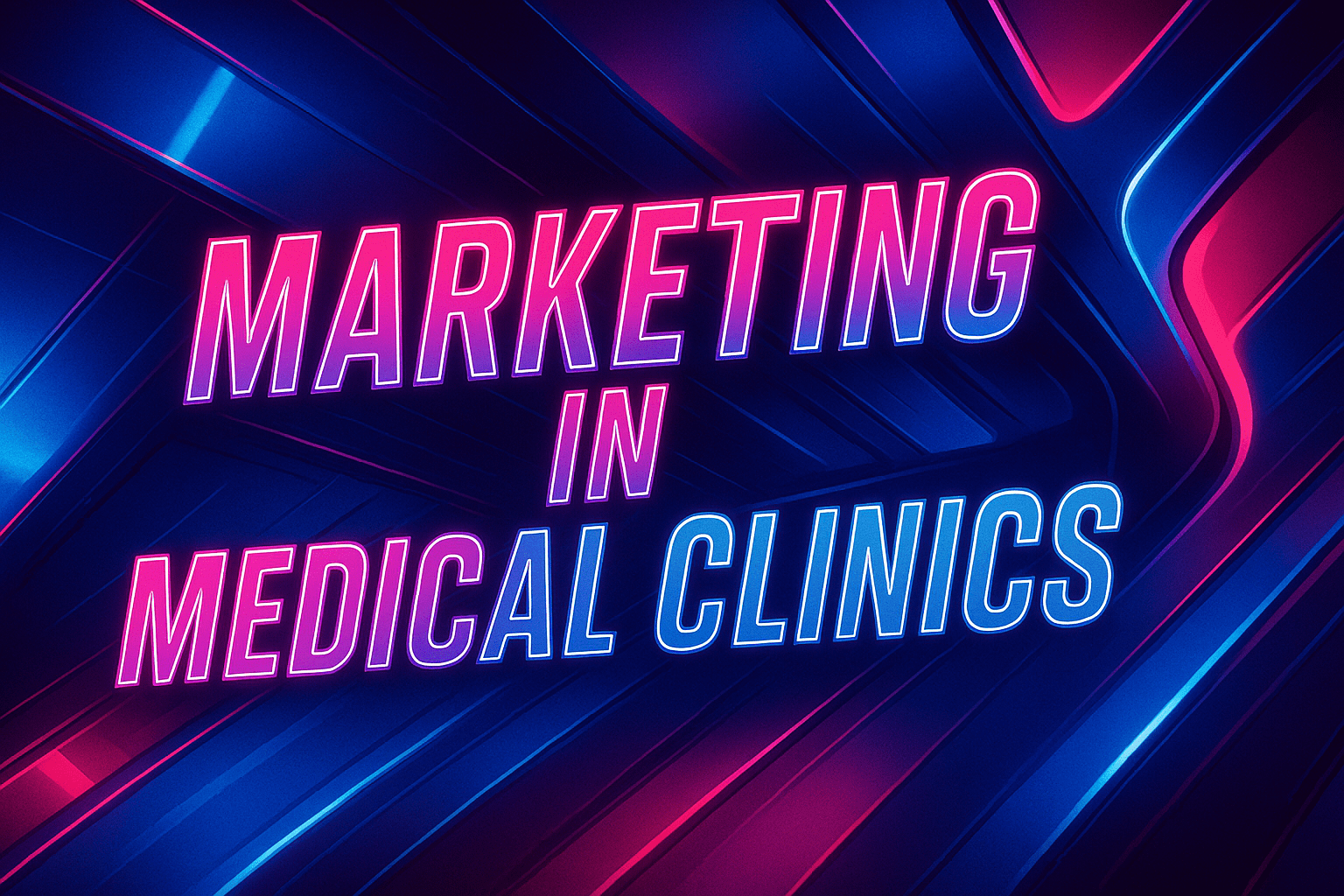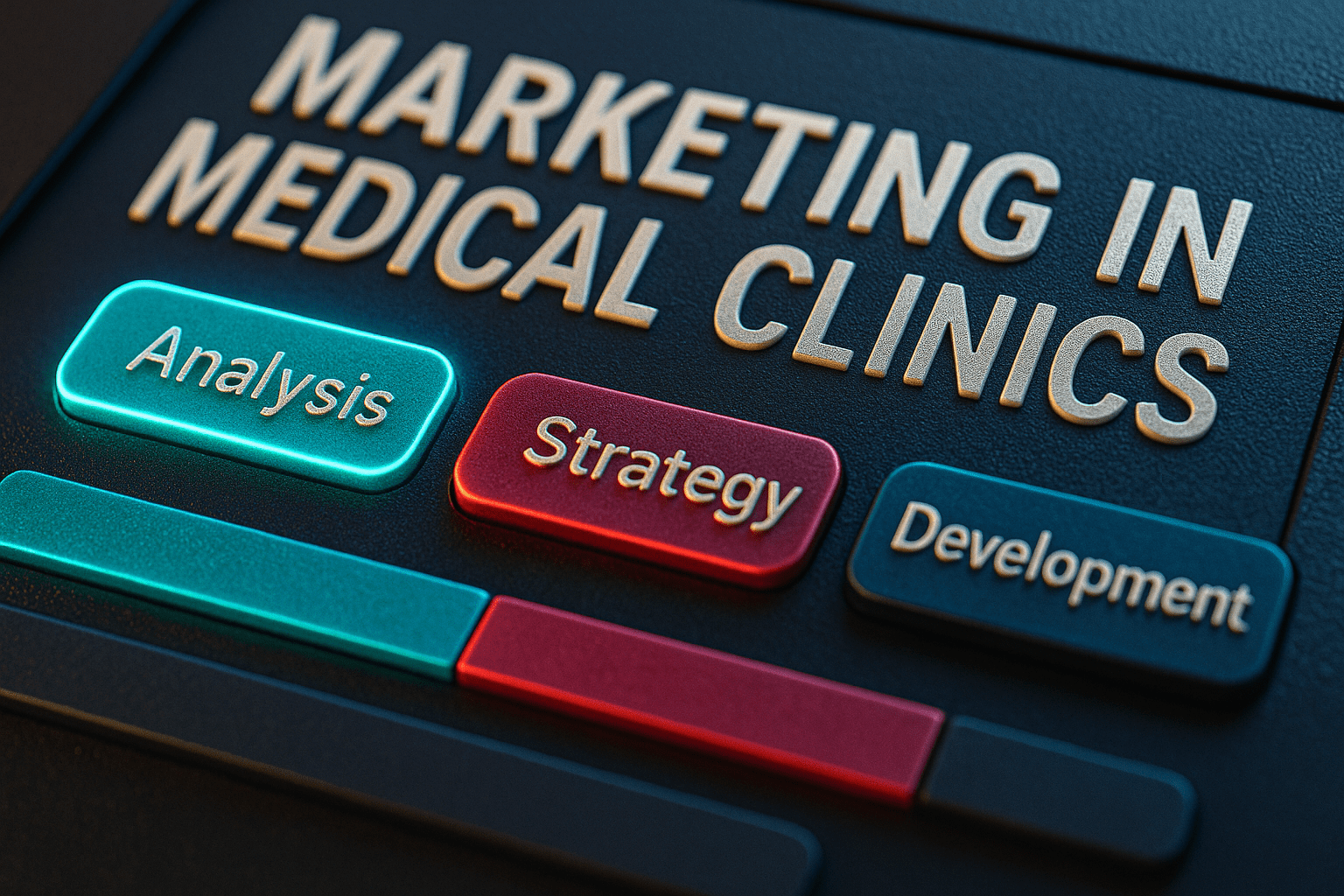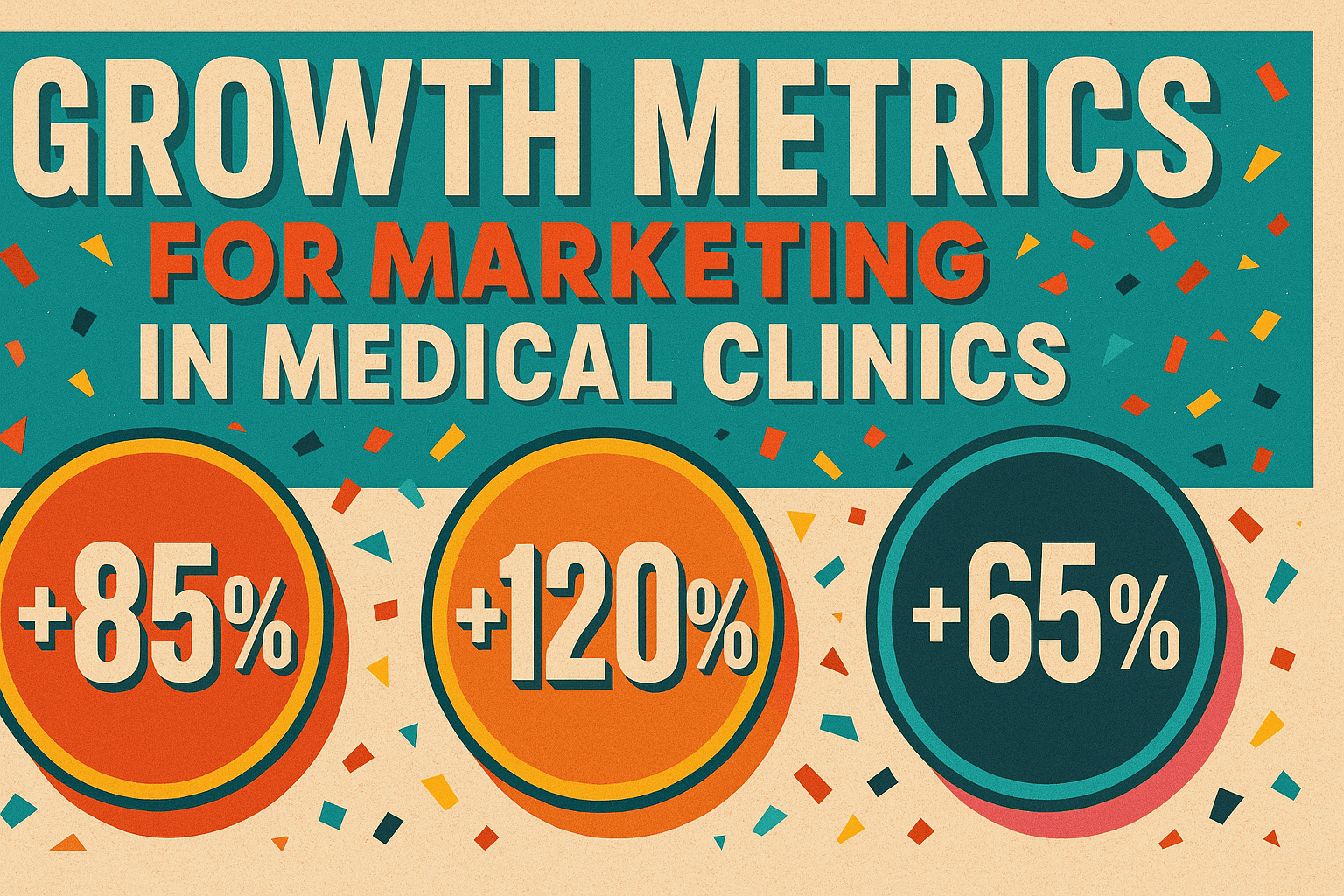Marketing for Medical Clinics: Proven Strategies to Attract More Patients in 2026
by Design Delulu Editorial · October 14, 2025

Smart, fast, and measurable. Here's how marketing helps medical clinics win.
In today's competitive healthcare landscape, medical clinics can no longer rely solely on referrals and word-of-mouth to sustain growth. Patients are researching providers online, comparing reviews, and making decisions based on digital presence long before they pick up the phone. Whether you're a primary care clinic, specialized practice, or urgent care facility, strategic marketing isn't optional—it's essential for survival and growth.
The challenge? Most clinic administrators and physicians lack the time, expertise, or resources to build and execute effective marketing campaigns. This guide breaks down exactly how marketing for medical clinics works, what deliverables drive real results, and how to implement a system that attracts qualified patients while maintaining compliance with healthcare regulations. From SEO and content strategy to patient journey mapping and attribution tracking, you'll discover a roadmap that turns marketing investment into measurable patient acquisition.

Why Medical Clinics Need Strategic Marketing Now
The healthcare industry has undergone a fundamental shift in how patients discover and choose providers. According to recent research, over 77% of patients use search engines before booking an appointment, and 71% check online reviews as part of their decision-making process. For medical clinics, this means your digital presence directly impacts patient volume and revenue.
Traditional marketing approaches—print ads, direct mail, and community sponsorships—still have their place, but they lack the targeting precision and measurability that digital channels provide. Modern marketing for medical clinics combines multiple touchpoints to guide potential patients from awareness to appointment booking:
- Search visibility: When someone searches for 'family doctor near me' or 'urgent care open now,' your clinic needs to appear prominently in results
- Trust signals: Reviews, credentials, testimonials, and educational content build credibility before the first contact
- Conversion optimization: A seamless path from search to scheduling removes friction and increases appointment bookings
- Patient retention: Email campaigns, health tips, and appointment reminders keep your clinic top-of-mind for ongoing care
Beyond patient acquisition, strategic marketing helps clinics differentiate their services in crowded markets. Whether you specialize in pediatrics, sports medicine, or integrated wellness, effective marketing communicates your unique value proposition to the exact patients who need your expertise. It's not about casting a wide net—it's about reaching the right people with the right message at the right time.
Core Components of Effective Medical Clinic Marketing
A comprehensive marketing strategy for medical clinics integrates multiple channels and tactics that work together to drive patient acquisition. Here are the essential components that form the foundation of any successful clinic marketing program:
Search Engine Optimization (SEO) for Local Visibility
For medical clinics, local SEO is non-negotiable. Most patients search for healthcare providers within a specific geographic radius, making location-based optimization critical. This includes:
- Optimizing your Google Business Profile with accurate hours, services, photos, and regular posts
- Building location-specific landing pages for each clinic address or service area
- Earning citations in healthcare directories and local business listings
- Creating content that targets condition-specific and location-specific search queries
- Implementing schema markup for medical practices to enhance search result display
The goal is to dominate the 'local pack'—those three map listings that appear at the top of Google searches. Clinics that secure these positions see dramatically higher click-through rates and patient inquiries compared to competitors buried on page two.
Content Marketing That Educates and Converts
Educational content positions your clinic as a trusted authority while addressing patient concerns at every stage of their journey. An effective content strategy for medical clinics includes:
- Condition guides: In-depth articles about common health issues your clinic treats, written in patient-friendly language
- Treatment explanations: Clear descriptions of procedures, what to expect, recovery timelines, and success rates
- Provider profiles: Humanizing your physicians and staff with bios, specialties, and personal healthcare philosophies
- Patient success stories: HIPAA-compliant testimonials and case studies that demonstrate real outcomes
- Health tips and prevention: Blog posts, videos, and newsletters that provide ongoing value beyond treatment
This content serves dual purposes: it improves search rankings by targeting relevant keywords, and it builds trust by answering questions patients are actively researching. Every piece of content should guide readers toward a clear next step, whether that's scheduling an appointment, calling for a consultation, or downloading a resource.
Reputation Management and Social Proof
For healthcare providers, reputation is everything. Potential patients weigh online reviews heavily when choosing between clinics, with a single negative review potentially costing dozens of lost appointments. A proactive reputation management strategy includes:
- Systematically requesting reviews from satisfied patients through automated post-visit campaigns
- Monitoring all review platforms (Google, Healthgrades, Vitals, Yelp) for new feedback
- Responding professionally and empathetically to both positive and negative reviews
- Addressing service issues internally before they become public complaints
- Showcasing positive testimonials across your website and marketing materials
The average medical practice needs at least 20-30 recent positive reviews to compete effectively. Beyond quantity, review recency and response rate signal to both patients and search algorithms that your clinic is actively engaged and trustworthy.
Paid Advertising for Immediate Patient Acquisition
While organic strategies build long-term visibility, paid advertising delivers immediate results for medical clinics launching new services or filling appointment gaps. Strategic paid campaigns include:
- Google Ads: Targeting high-intent keywords like 'pediatrician accepting new patients' or 'urgent care near me'
- Local Service Ads: Google's healthcare-specific ad format that appears above traditional search ads
- Facebook and Instagram Ads: Awareness campaigns targeting specific demographics, conditions, or life stages
- Retargeting campaigns: Following up with website visitors who didn't book appointments on their first visit
- Seasonal campaigns: Promoting flu shots, back-to-school physicals, or sports medicine during relevant periods
The key to profitable paid advertising is precise targeting and conversion tracking. Every dollar spent should be tied to measurable outcomes—not just clicks, but actual appointment bookings and patient lifetime value.

Building Your Medical Clinic Marketing System
Effective marketing for medical clinics isn't about random tactics—it's about building an integrated system where each component reinforces the others. Here's how to construct a marketing engine that consistently attracts and converts qualified patients:
Phase 1: Discovery & Strategic Foundation
Before launching campaigns, you need clarity on who you're targeting and what success looks like. This foundational phase includes:
- Patient persona development: Identify your ideal patients by demographics, conditions, insurance types, and decision-making factors
- Competitive analysis: Understand what competing clinics are doing well (and where gaps exist)
- Service differentiation: Clarify what makes your clinic unique—specialized expertise, convenient hours, technology, patient experience
- Goal setting: Define specific targets for new patient acquisition, appointment volume, and revenue growth
- Compliance review: Ensure all marketing plans align with HIPAA, state medical board regulations, and advertising guidelines
This phase typically takes 1-2 weeks and creates the strategic blueprint that guides all subsequent marketing activities.
Phase 2: Digital Foundation and Asset Development
With strategy defined, the next phase focuses on building or optimizing your digital presence:
- Website audit and optimization: Ensure your site is mobile-friendly, fast-loading, and conversion-focused with clear calls-to-action
- Online scheduling integration: Reduce friction by allowing patients to book appointments directly from your website
- Content calendar creation: Plan 3-6 months of blog posts, videos, and social content aligned to patient search behavior
- Review generation system: Implement automated tools to request feedback from satisfied patients
- Analytics setup: Install tracking to measure traffic sources, conversion rates, and patient acquisition costs
This phase establishes the infrastructure that makes all other marketing efforts measurable and scalable. Without proper tracking and optimization systems, you're essentially marketing blind.
Phase 3: Campaign Execution and Channel Activation
Now the marketing engine comes to life with coordinated campaigns across multiple channels:
- SEO content production: Publishing optimized articles, service pages, and location pages on a consistent schedule
- Local SEO optimization: Building citations, earning backlinks, and enhancing Google Business Profile with posts and photos
- Email campaigns: Sending appointment reminders, health tips, and service announcements to your patient database
- Social media presence: Sharing educational content, provider spotlights, and patient success stories
- Paid advertising launch: Running targeted campaigns to fill immediate appointment availability or promote new services
The key is consistency and coordination. Each channel should reinforce the same messaging while catering to different patient preferences and stages of the decision journey.
Phase 4: Measurement and Continuous Optimization
Marketing for medical clinics requires ongoing refinement based on real performance data. This final phase never truly ends—it's a continuous cycle of testing, learning, and improving:
- Weekly analytics review: Monitor traffic, lead quality, appointment bookings, and channel performance
- Conversion rate optimization: Test landing page variations, calls-to-action, and form designs to increase booking rates
- Content performance analysis: Identify which topics and formats drive the most engagement and patient inquiries
- Budget reallocation: Shift investment toward highest-performing channels and pause underperforming tactics
- Quarterly strategic reviews: Step back to assess overall progress toward goals and adjust strategy as needed
This data-driven approach ensures you're not just busy with marketing activities, but actually moving the needle on patient acquisition and clinic growth.
Deliverables: What You Actually Get
When working with a marketing partner or building an in-house system, here are the tangible deliverables that drive results for medical clinics:
- Editorial calendar: A 90-day content roadmap outlining topics, formats, target keywords, and publishing schedule aligned to patient search behavior and seasonal healthcare trends
- Content briefs & assets: Detailed outlines for blog posts, service pages, and patient guides, plus finished content pieces optimized for both patients and search engines
- Campaign creative: Ad copy, social media graphics, email templates, and landing pages designed specifically for healthcare audiences with clear conversion paths
- KPI dashboard: A centralized analytics view showing traffic sources, patient inquiries, appointment bookings, cost per acquisition, and ROI by channel—your single source of truth for marketing performance
These deliverables work together to create a complete marketing system rather than disconnected tactics. The editorial calendar ensures consistent content production, the content itself drives organic visibility and trust, campaigns accelerate patient acquisition, and the dashboard reveals what's working so you can do more of it.
Best Practices for Medical Clinic Marketing Success
After working with dozens of healthcare practices, certain patterns emerge among the most successful clinic marketing programs. Follow these proven best practices to maximize your marketing ROI:
- Prioritize highest-impact pages and flows first: Focus on optimizing your homepage, service pages, and appointment booking process before expanding to broader content initiatives. These high-traffic pages have the greatest impact on conversion rates.
- Pair creative with measurement; every asset has a KPI: Never launch a campaign, publish content, or create a landing page without defining success metrics upfront. This discipline ensures resources flow to revenue-generating activities.
- Use templates and systems to scale quickly: Create reusable frameworks for blog posts, service pages, email campaigns, and social content. This reduces production time and maintains consistency across all patient touchpoints.
- Close the loop with weekly reviews and quarterly resets: Establish regular cadences for analyzing performance data. Weekly check-ins catch issues early, while quarterly reviews enable strategic pivots based on accumulated insights.
- Mobile-first everything: Over 60% of healthcare searches happen on mobile devices. Every page, form, and campaign must deliver an excellent mobile experience or you'll lose patients at the moment they're ready to book.
- Speak to patient emotions, not just facts: While clinical expertise matters, patients ultimately choose providers they trust and feel comfortable with. Marketing should address both rational concerns (credentials, insurance, location) and emotional needs (empathy, convenience, communication style).
Industry-Specific Strategies for Medical Clinics
Healthcare marketing requires nuances that don't apply to other industries. These medical clinic-specific strategies account for regulatory requirements, patient psychology, and industry dynamics:
- Map search intent to medical clinics buyer stages: Understand the difference between informational searches ('what causes lower back pain'), consideration searches ('chiropractor vs physical therapy'), and decision searches ('back pain specialist near me accepting Aetna'). Create content for each stage.
- Use social proof and outcomes early in the journey: Don't wait until patients visit your office to showcase success stories. Feature patient testimonials, before/after results (where appropriate), and provider credentials prominently on every marketing channel.
- Measure against a single source of truth dashboard: Healthcare attribution is complex—patients might find you through search, check reviews, visit your website multiple times, then call to book. Your dashboard must connect these touchpoints to understand the true patient acquisition cost.
- Ship small, test fast, keep compounding wins: Rather than massive website redesigns or elaborate campaigns, make incremental improvements continuously. Small wins compound into significant results over time without the risk of large-scale failures.
- Navigate compliance carefully: All marketing must comply with HIPAA, avoid making unsubstantiated claims, respect patient privacy, and follow state medical board advertising rules. When in doubt, have legal review before publishing.
- Segment by insurance and specialty: Not all patients are equal in value or fit. Target campaigns to attract patients with insurance you accept and conditions you specialize in treating, rather than trying to be everything to everyone.

Measuring Marketing ROI for Medical Clinics
For clinic administrators and practice owners, the bottom line question is always: Is marketing worth the investment? Here's how to measure marketing ROI specifically for medical practices:
Primary Revenue Metrics
Start with metrics directly tied to financial performance:
- New patient acquisition: Total number of new patients attributed to marketing efforts each month
- Cost per acquisition (CPA): Total marketing spend divided by new patients acquired—aim for CPA below 50% of first-year patient value
- Patient lifetime value (LTV): Average revenue generated per patient over their entire relationship with your clinic, accounting for multiple visits and referrals
- Marketing-attributed revenue: Total revenue from patients who discovered your clinic through marketing channels
- ROI percentage: (Marketing-attributed revenue minus marketing cost) divided by marketing cost, expressed as a percentage
Leading Indicators and Channel Metrics
These metrics predict future revenue and help optimize your marketing mix:
- Organic search traffic: Visitors arriving from Google, Bing, and other search engines without paid ads
- Keyword rankings: Your position in search results for target phrases like 'family doctor [city]' or 'urgent care near me'
- Conversion rate: Percentage of website visitors who complete desired actions (appointment requests, phone calls, form submissions)
- Email engagement: Open rates, click rates, and appointment bookings from patient email campaigns
- Review volume and rating: New reviews per month and average star rating across all platforms
Setting Realistic Benchmarks
Medical clinic marketing performance varies by specialty, location, and competition, but here are general benchmarks for well-executed programs:
- Organic traffic should increase 20-40% year-over-year once SEO efforts mature
- Website conversion rates typically range from 2-5% for healthcare sites (visitors to leads)
- Email marketing generates ROI of $36 for every dollar spent in healthcare industries
- Google Ads for medical practices should achieve 3-8% click-through rates and sub-$150 cost per patient acquisition
- Comprehensive marketing programs should deliver 5:1 to 10:1 ROI within 6-12 months
The key is tracking consistently and optimizing continuously. Marketing ROI improves over time as content compounds, search rankings strengthen, and reputation grows.
Common Marketing Mistakes Medical Clinics Make
Avoid these costly pitfalls that undermine marketing effectiveness for healthcare practices:
- Neglecting local SEO: Focusing on general healthcare content without optimizing for local searches means missing patients actively looking for nearby providers
- Inconsistent content production: Publishing sporadically rather than maintaining a regular schedule prevents search engines from prioritizing your site and patients from viewing you as an active practice
- Ignoring mobile experience: If your website is difficult to navigate on smartphones or appointment booking doesn't work smoothly on mobile, you're losing the majority of potential patients
- No clear conversion path: Marketing that drives traffic without making it easy to book appointments wastes your investment—every page needs prominent calls-to-action
- Forgetting existing patients: Over-focusing on new patient acquisition while neglecting retention means constantly filling a leaky bucket. Email campaigns and patient communication keep your schedule full
- Marketing without measurement: Running campaigns without tracking phone calls, form submissions, and appointment sources means you can't identify what's working or optimize budget allocation
- Copying competitor tactics blindly: What works for a large hospital system or specialty clinic may not suit your practice's unique positioning and patient base
Getting Started: Your 30-Day Marketing Kickstart
Ready to elevate your clinic's marketing? Here's a practical 30-day action plan to build momentum:
Week 1: Foundation and Assessment
- Audit your current online presence (website, Google Business Profile, social media, review sites)
- Install Google Analytics and call tracking to establish baseline metrics
- Survey 10-15 recent patients about how they found your clinic and why they chose you
- Research competitor marketing tactics and identify gaps you can fill
Week 2: Quick Wins
- Optimize your Google Business Profile with photos, services, accurate hours, and a compelling description
- Create a system for requesting reviews from satisfied patients (email template + workflow)
- Fix critical website issues: mobile responsiveness, page speed, broken links, outdated information
- Ensure your phone number and 'Book Appointment' button are prominent on every page
Week 3: Content Foundation
- Build a 90-day editorial calendar targeting conditions you treat and questions patients ask
- Create or optimize service pages for your key offerings with clear descriptions and booking CTAs
- Write your first two blog posts addressing common patient concerns in your specialty
- Set up email capture offers (health tips, condition guides, appointment reminders)
Week 4: Activation and Measurement
- Launch your review generation system and aim to collect 5-10 reviews in the first month
- Publish your initial content pieces and share across social media channels
- Create a simple KPI dashboard tracking traffic, leads, appointments, and sources
- Schedule weekly 15-minute marketing review meetings to assess progress and adjust tactics
This 30-day sprint establishes the foundation for sustainable growth. From there, continue producing content consistently, optimizing based on data, and scaling what works.
Frequently Asked Questions
Let’s level up your Medical Clinics business
Need services that actually move the needle for Medical Clinics? See our approach, pricing, and timelines—then book a quick call.
Additional Resources
- Schedule a Marketing Strategy Call
Book a complimentary 30-minute consultation to discuss your clinic's marketing goals, current challenges, and growth opportunities. We'll assess your digital presence, identify quick wins, and outline a customized roadmap for attracting more patients.
- View Our Medical Marketing Portfolio
Explore case studies and examples of successful marketing campaigns we've executed for medical clinics, healthcare practices, and wellness centers. See the strategies, creative assets, and measurable results that drove patient acquisition and clinic growth.
- Free Medical Marketing Tools
Access our collection of free resources designed specifically for medical clinics: SEO audit templates, content calendars, patient persona worksheets, ROI calculators, and marketing checklists to jumpstart your patient acquisition efforts.
Related Reading

Discover proven marketing strategies for plastic surgeons. Learn SEO, content marketing, social media tactics, and patient acquisition systems that drive real results.

Discover proven marketing strategies for landscapers that drive real results. From SEO to social proof, learn how to attract high-value clients and scale your landscaping business profitably.
